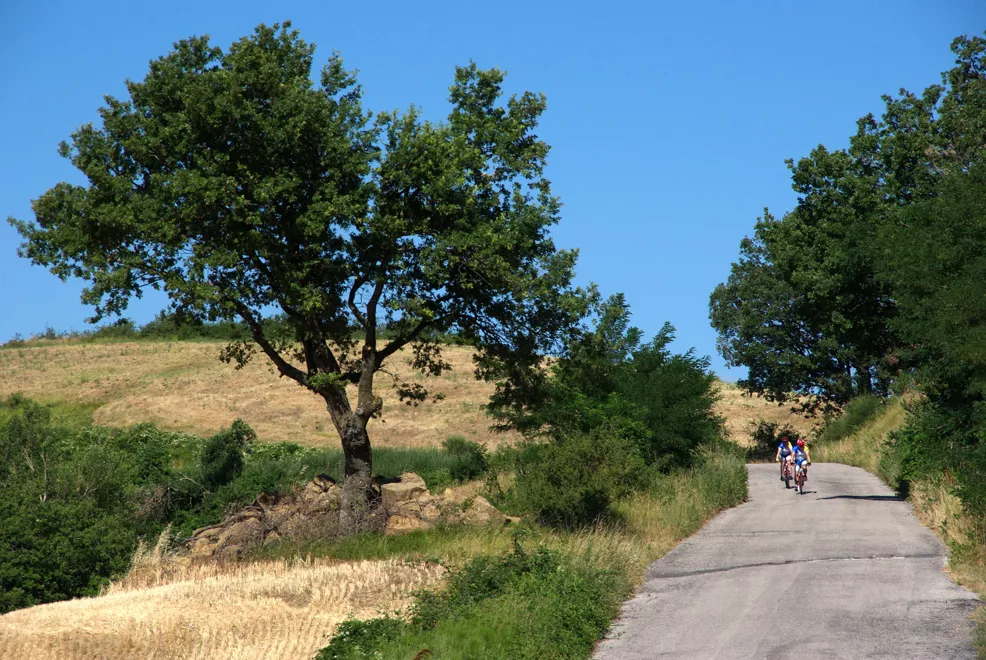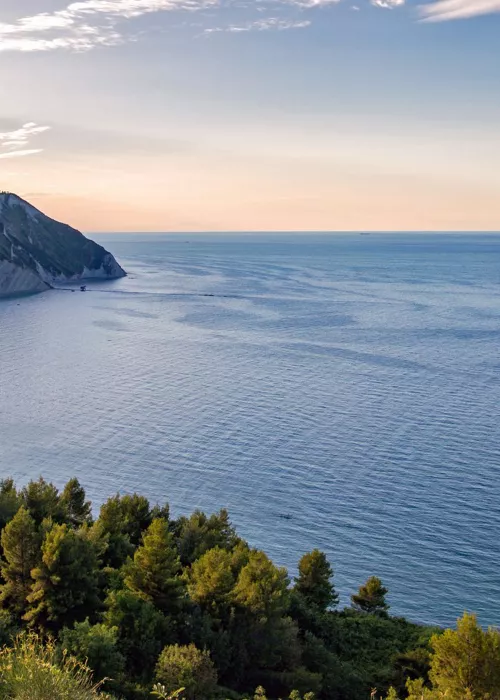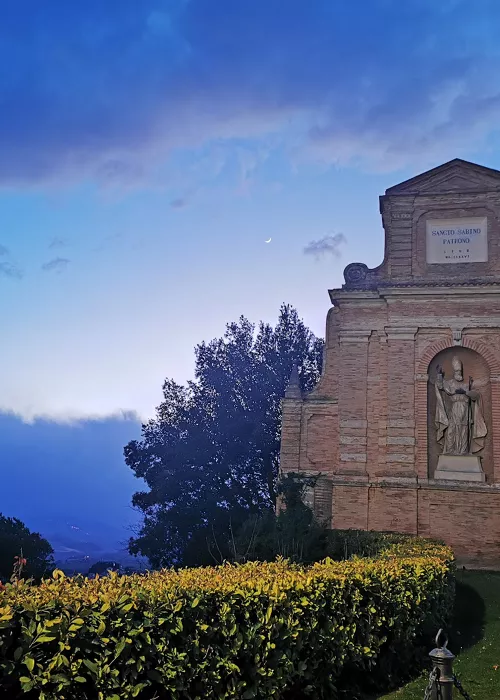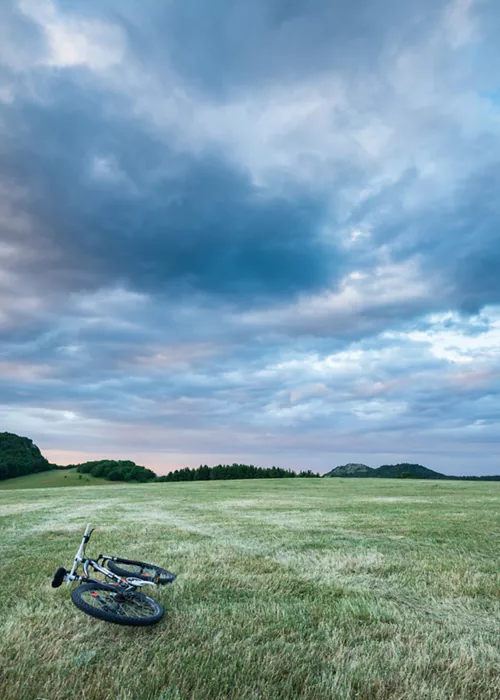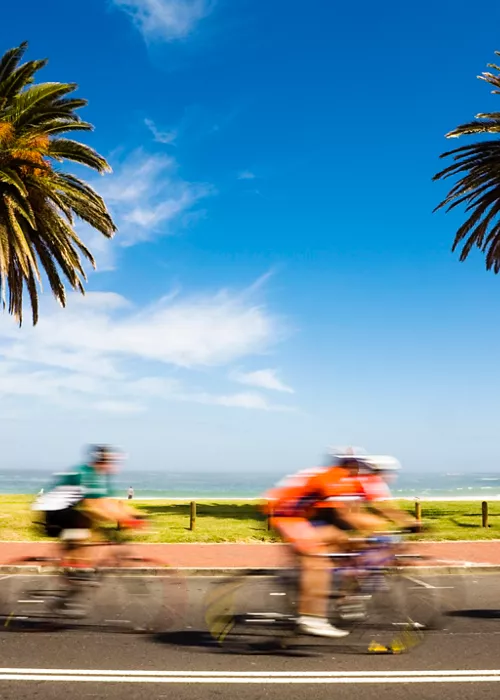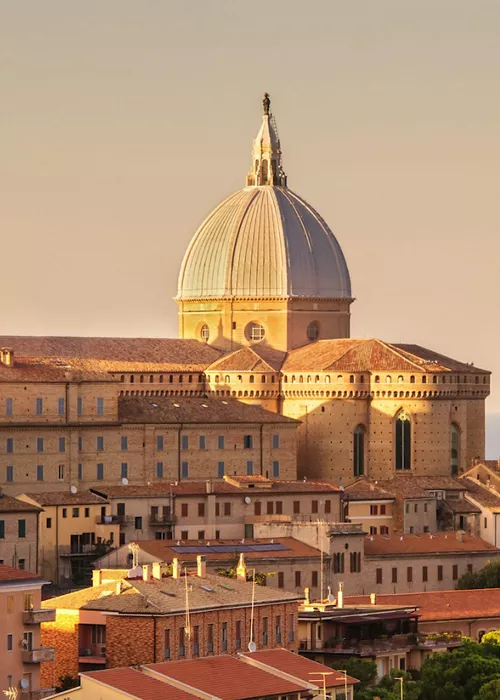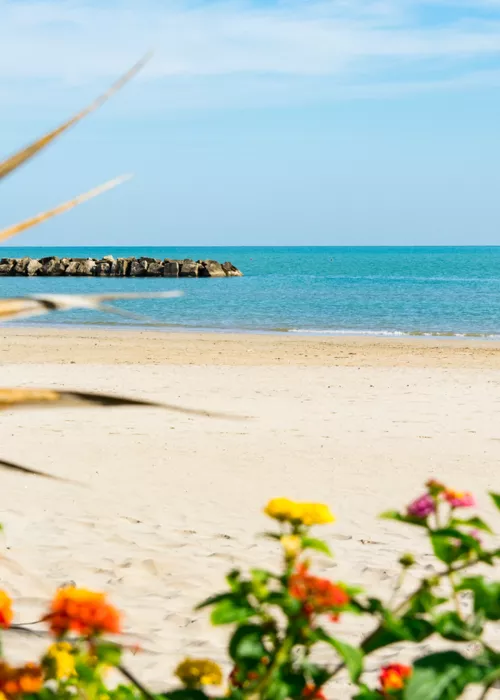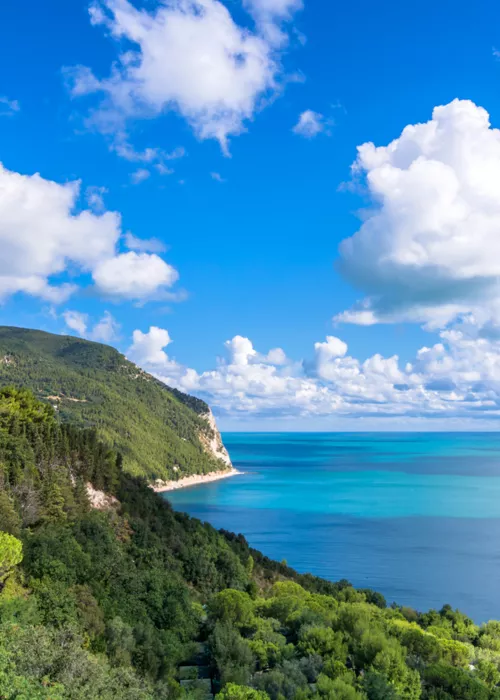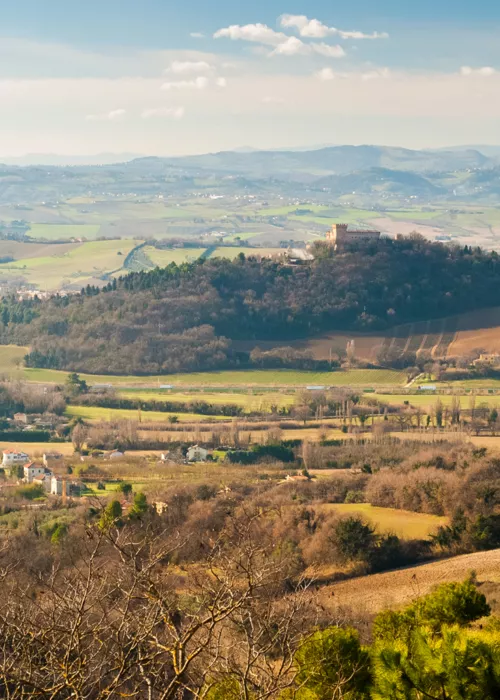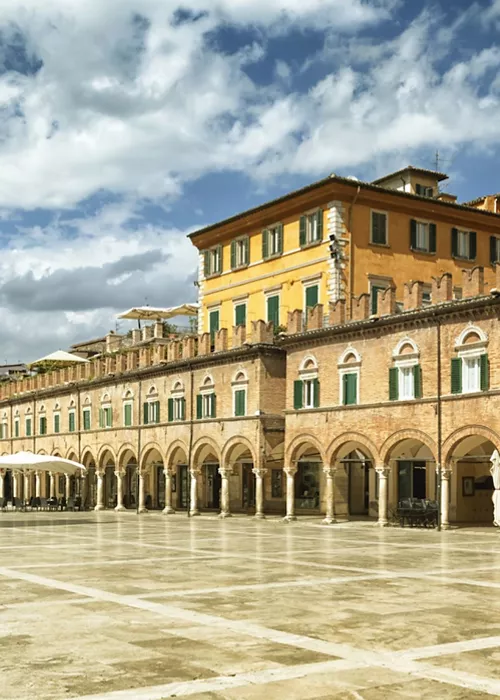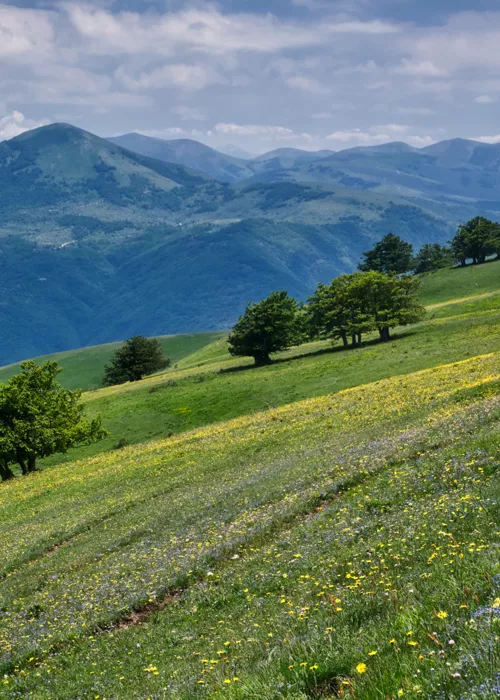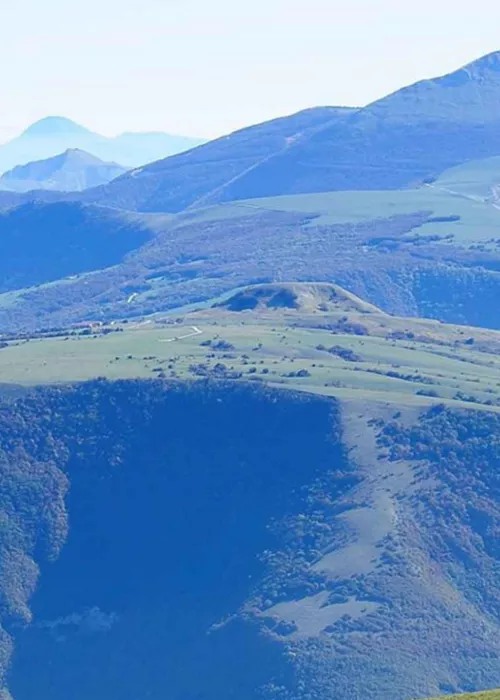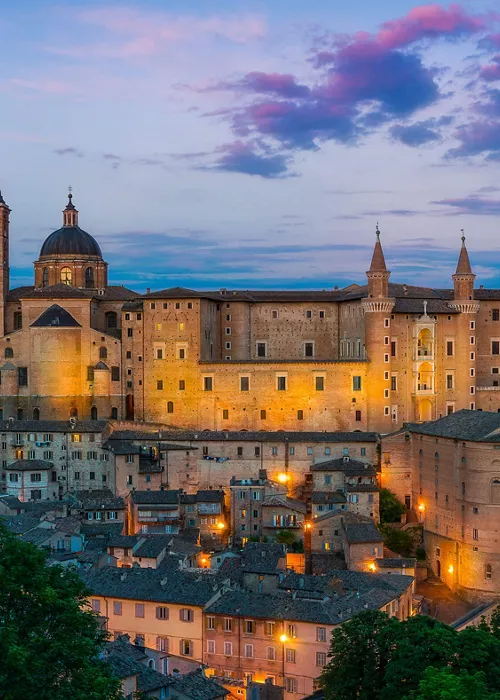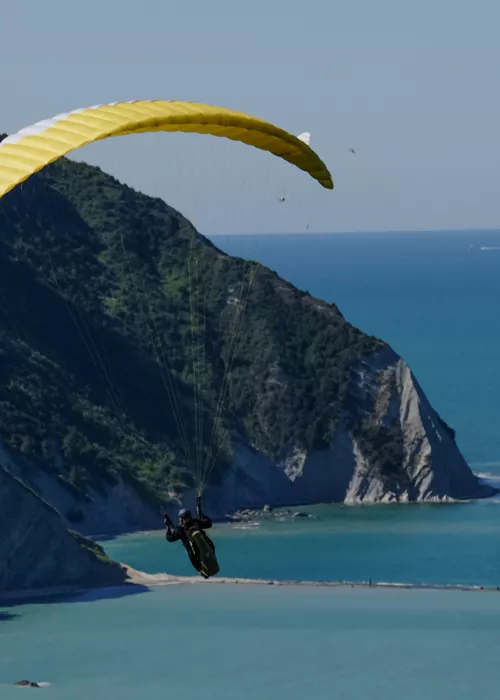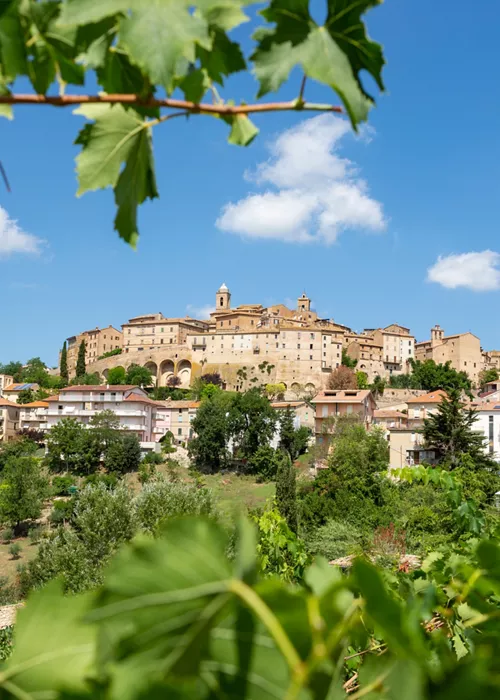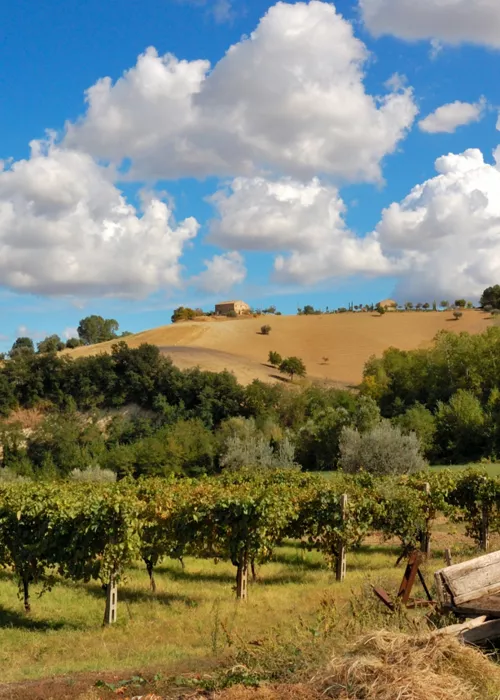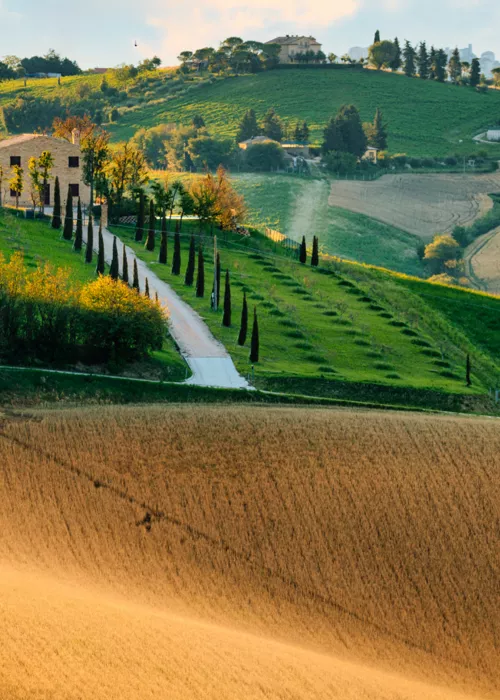Pedaling in Le Marche: an itinerary from the Apennines to the coast
3 minutes
The fifth appointment of Tirreno-Adriatico, the two-wheeled race that runs across the Peninsula, from sea to sea, has quite a telling fame. It is called the "stage of the walls". Don’t get deceived though: with its 155 kilometres it is a fairly short route for the professional riders, yet super hard. Let’s have a look at it. The first half of the route runs on mild slopes, dotted with people-friendly villages, but in the second half the riders deal with almost vertical asphalted ‘walls’, that test even the best trained riders. Take up the challenge, if you’d like. If worse comes to worse, you get off your bike. What about the booby prize? A dinner with fish-broth-based courses and a glass of verdicchio wine, that is, some of the iconic products of the food-and-wine local tradition.
Panoramas and ancient trades mark the hinterland
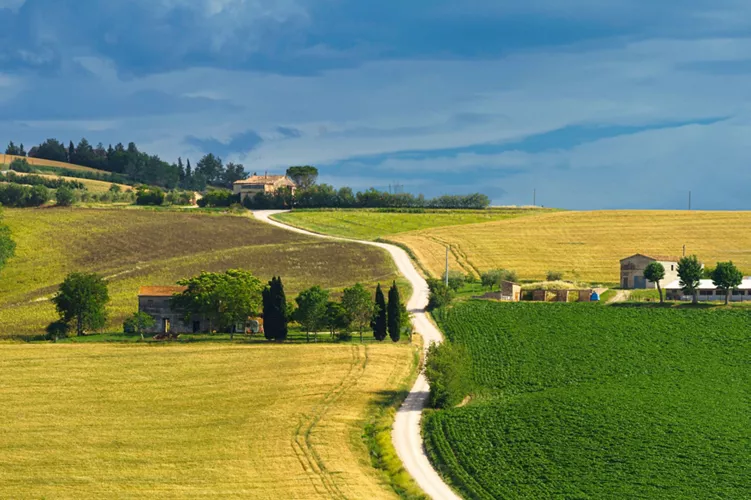
In the initial kilometres, the riders pedal on easy roads in the Apennines, setting off in Sefro, and roll across Castelraimondo, a town of master florists and traditions, and San Severino Marche that features several towers and bell towers. Even the climb heading to Valico di Pietra Rossa – 667m of altitude – is not intimidating. In contrast, the descent into Cingoli is the prelude to an obligatory stop, which can refresh both the body and the mind. It is called the ‘balcony of Le Marche’ and is one of the most beautiful towns in Italy, with a panoramic terrace from where you can admire the Adriatic coast, from Gran Sasso to the Conero promontory. It is hardly a 40km stretch from the start. You choose whether you continue on the race route or you rather deviate towards Fabriano, to explore one of the great manufacturing local traditions. The Paper and Watermark Museum is housed in a former Convent of the Dominican fathers. There, you set off for a backward journey across 900 years of paper making history and behold a valuable collection of old and modern watermarks.
On the ‘walls’, where you cannot but pedal
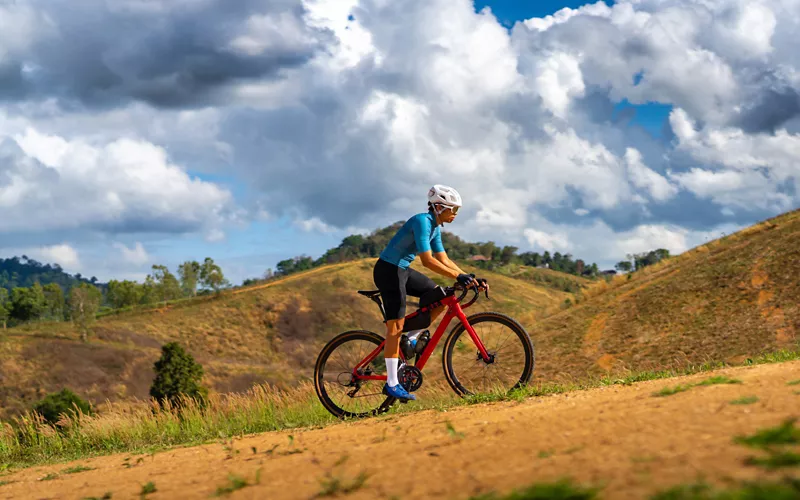
Past Montegranaro, the going gets tough. The much-feared ‘walls’, the identifying feature of this stage, are like ‘garage ramps’ that force the cycling professionals to get out of the saddle. Just a few data, to get a feel of the deed ahead. The first one is the muro in Monte Urano, a village lying at a dozen kilometres off the coast – its highest gradient: 15 percent. Past Lido di Fermo the climb of Capodarco kicks off. It reaches an 18 percent gradient and, shortly after, comes the climb leading to Fermo-Strada Calderari. As you are panting, you may even smell the salty air from the sea: a sweet thought to soothe your effort.
In Fermo, amidst squares as lovely as lounges and roman ruins
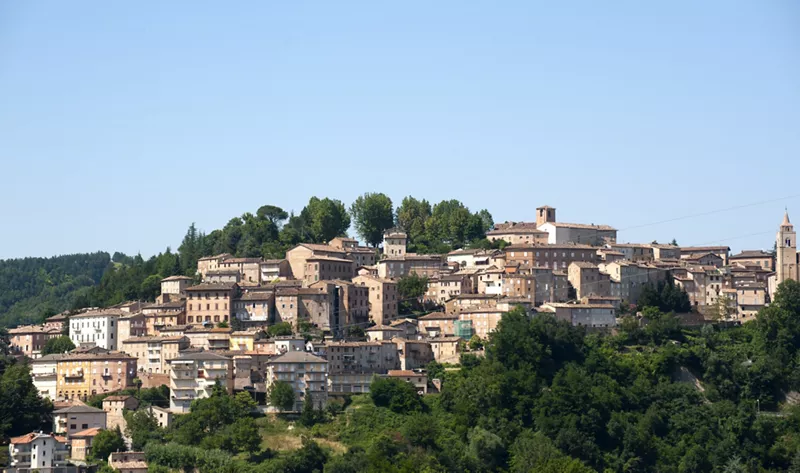
To accomplish our journey along the fourth stage course of Tirreno-Adriatico, just the final section is left. What a finale! It is an 18km semi-circuit with two further climbs: one heads to Madonnetta d’Ete and, once again, the climb towards Fermo-Strada Calderari awaits the riders. But the athletes cannot catch their breath, yet. The final kilometres also climb up, on narrow porphyry roads that require some cautiousness, especially if the roadway is wet. On top of that, the finish line is on a 10 percent gradient ramp. It is a hellhole for the indolent ones but is surrounded by a paradise-town. Fermo was built almost just in stone on the top of the colle Sabulo. It has a wonderful historical centre with winding alleyways, lovely squares, Medieval churches and Renaissance palacess. It is a must to stop in Piazza del Popolo, with its prespective view designed by the surrounding arcades, and to visit Palazzo dei Priori, home to the Town Library and the Sala del Mappamondo. If there is some time left, do not miss the Teatro dell’Aquila, inaugurated in 1792. It is renowned for its acoustic and decorations. Finally, do not leave without visiting the Roman Cisterns in Fermo: 30 rooms connected by tunnels that were made in the first century AD to collect and cleanse the waters.
By RCS Sport editorial staff

